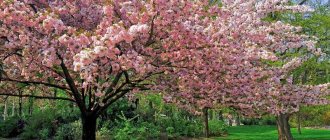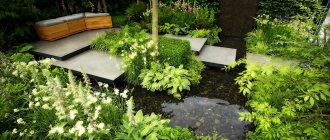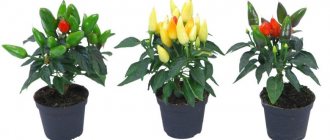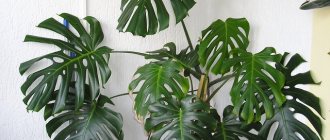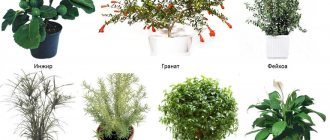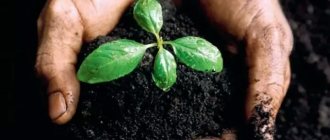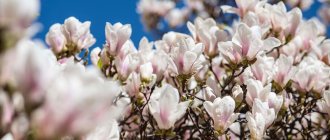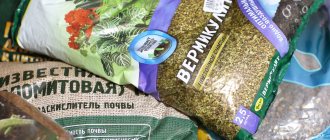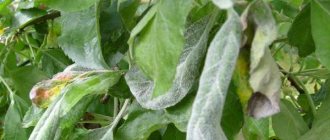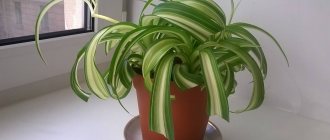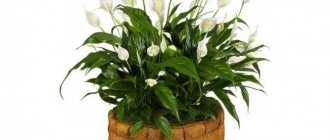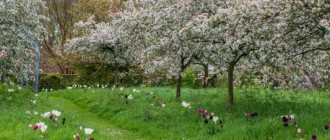Ecology of life: On the site we have already touched upon the topic of problematic soils more than once, what they are like, how to improve them and what to plant on them. But somehow everyone avoided alkaline soils, which are typical for many southern regions, so we will try to make up for it..
On the site we have already touched upon the topic of problematic soils more than once, what they are like, how to improve them and what to plant on them. But somehow everyone ignored alkaline soils, which are typical for many southern regions, so we will try to fill this gap.
Barberry
Barberry (Berberis) - thorny shrubs with medium-sized leathery leaves, golden-yellow fragrant flowers, red, blue or black, juicy, sour berries that stay on the branches for a long time, good for summer cottages in various design elements.
Features of cultivation
Deciduous species of barberries in central Russia are winter-hardy to varying degrees. Most of them are undemanding to soil, shade-tolerant, but develop better in the light, are drought-resistant, and do not tolerate stagnant moisture. There is little damage from pests. Many species of barberries are an intermediate host of the rust fungus (Puccinia graminis), which is dangerous for grain crops, so they should not be located near fields (minimum distance 250-500 m).
Application
Barberries are so diverse that they find their place in various groups of woody plants, are harmonious in flower beds with perennials and annuals, and spectacular in rockeries.
Privet
Common privet (Ligustrum vulgare) is a deciduous shrub 2-3 m high with leathery, dark green leaves and fragrant, white or cream flowers, collected in fairly large panicle inflorescences; bloom in June-August. Decorative forms are available. If you have allergies in your family, you should not use it!
Features of cultivation
Common privet is winter-hardy up to the latitude of Bryansk and Orel; in the central and northern regions of central Russia it can freeze above the snow level. It is quite shade-tolerant, but prefers lighted places, is drought-resistant, undemanding to soil, but grows better in fertile ones. Can be damaged by aphids, leafmining moths, thrips, scale insects; be affected by leaf spot, wilt.
Application
The big advantage of common privet is that it tolerates shearing well and retains its shape for a long time, so it can be used to create close, dense, high, molded borders, preferably narrow, single-row ones. Privet can form very dense, molded hedges 2-3 m high and even living walls. The cut rods are used for weaving. It can be used without molding as a honey-bearing hedge with trimming of the sides.
Hawthorn
Hawthorn (Crataegus) is a long-lived (up to 200-300 years), slow-growing, large shrubs, often with thorns, inflorescences of white flowers and apple-shaped fruits that are edible in most species.
Features of cultivation
Hawthorns are light-loving, can tolerate shading, but at the same time they bloom and bear fruit less abundantly, are drought-resistant, and are relatively undemanding to the soil. Soft hawthorn, large-thorned hawthorn, etc. grow well on calcareous ones. They are damaged by a significant number of pests and diseases common to traditional fruit plants. The main pests are butterflies (especially hawthorn), aphids, apple mealybugs, flower beetles; Diseases include powdery mildew and leaf rust.
Application
Because hawthorns are excellent at tolerating molded pruning, which promotes thorn development, they are one of the best species for creating beautiful, and highly thorny species - and completely impenetrable, molded hedges, trellises and free-growing living walls.
Bobovnik
Common bean (Laburnum anagyroides) is a luxurious golden shrub with drooping golden-yellow long tassels up to 30 cm; bloom in May-June. The entire plant is poisonous!
Features of cultivation
Common bean is a sybarite: in central Russia it can freeze over after a wet summer, but the crown quickly recovers. Light-loving, develops better in fertile, well-drained, lime-containing soils.
Application
Bobovnik is good both in solitary and in group planting. Many amateur gardeners, having seen on the Internet a pergola with a hanging golden waterfall of bean inflorescences, dream of the same one, but this is only possible in the southern regions with good care.
Black elderberry
Black elderberry (Sambucus nigra) is a tall, spreading deciduous shrub. It does not stand out for the beauty of its small yellowish-white flowers in flat corymbs, but there are so many of them that in May the elderberry worthy competes with flowering viburnums. The fruits are shiny, black, small, ripen in August-September, and the elderberry is again transformed, decorated with them. Grows quickly. Fruit varieties with larger berries than the species have been bred. Decorative forms are available.
Features of cultivation
Black elderberry is winter-hardy to the latitude of Bryansk and Orel. It is resistant to shading, but the bright colors of decorative forms are better revealed in the sun, but direct sunlight, which can cause burns to young leaves, should be avoided. Black elderberry requires fertile soils and tolerates dry air and soil salinity. Can be damaged by aphids, black flies and verticillium.
Application
From black elderberry you can quickly form (by cutting) molded or free-growing beautiful flowering, fruit, and medicinal hedges. The dwarf form 'Nana' will do well in borders and low hedges. Variegated and yellow-leaved forms are suitable for very spectacular, colorful hedges.
Syrian hibiscus
Syrian hibiscus (Hibiscus syriacus) is a very spectacular deciduous shrub with red-lilac, pink-purple, rarely white, large, wide-bell-shaped, often double flowers that bloom from June to September.
Features of cultivation
Heat-loving, tolerates winters well in the southern regions without shelter. Light-loving, drought-resistant, little demanding on soil, develops better on loose loams.
Application
Effective and self-sufficient in single and group plantings; finds its place in mixborders and free-growing hedges. Valued for its late-summer extended (long) flowering.
Dogwood, or male dogwood (common)
Dogwood, or common dogwood, also known as dogwood (Cornus mas) is a modest, densely branched, durable, slow-growing, deciduous shrub, up to 5 m high, with golden-yellow flowers that bloom in March-April, long before the leaves appear. One of the earliest flowering tree species, providing the first food for bees coming to life after hibernation. The fruits are edible, cylindrical or pear-shaped, red, ripen in August-September. Decorative forms are available.
Features of cultivation
Male dogwood is quite winter-hardy; in central Russia, during severe winters, young shoots can freeze. It is photophilous, but tolerates significant shading and dry soil, but prefers rich, fresh, moist loams and limestones.
Application
Male dogwood is suitable for free-growing or espaliered, flowering, honey-bearing, fruit hedges; can be used for curly haircuts.
Cotoneaster (Cotoneaster) species, varieties
Despite the fact that cotoneasters are not particularly beautiful for their flowers, leaves, and fruits, they are nevertheless in demand in landscaping. These are deciduous and evergreen, slowly growing, densely branched shrubs with small or medium-sized, simple leaves, white or pink flowers collected in corymbs or racemes, and small, red or black fruits.
Features of cultivation
Cotoneasters are shade-tolerant, undemanding to soil, and drought-resistant. Application
Cotoneasters have long taken root in dachas, and this is no coincidence: they have a lot of advantages. They are good honey plants. They are decorative during flowering, fruit ripening and in autumn decoration. They respond successfully to molding pruning, forming dense hedges. After pruning, they grow back strongly, maintaining their growth form. It is allowed to trim 1/3 of the length of the annual shoot. Can be damaged by a bear.
LiveInternetLiveInternet
–Categories
- Hand Made (362)
- Master class (144)
- Embroidery (105)
- Sewing (50)
- Toys (45)
- Creative ideas. (26)
- Decoupage (22)
- Decor (158)
- Knitting (157)
- Crochet (136)
- Knitting (24)
- Vintage (68)
- Pictures (52)
- Interior (51)
- Touches for a portrait (38)
- Attic of Thoughts (27)
- Interesting things (5)
- Beauty is a terrible force (37)
- DIY natural recipes. (16)
- Cooking (28)
- Baking (15)
- Snacks (8)
- My works (26)
- Decor (15)
- Knitting (14)
- Toys (11)
- Hand Made (7)
- Newspaper weaving (7)
- Vintage (4)
- DIY icon restoration (1)
- Design (1)
- Useful things, cheat sheets. (24)
- Let's be healthy (22)
- Art (21)
- Photos (12)
- Video (6)
- Music (2)
- Painting (2)
- Design (21)
- Flowers (17)
- Newspaper weaving (16)
- Diary design (14)
- Dedicated to dogs (5)
- Once upon a time there was a pug (2)
- Perfume is the autograph of a person. (4)
- Audiobook (2)
Popular articles Medicinal herbs according to zodiac signs
Lavender angustifolia
Lavender angustifolia (Lavandula angustifolia) is a densely branched, bluish-green, evergreen, fragrant, low shrub. The flowers are small, from blue to violet, less often white-pink, in spike-shaped inflorescences; bloom in June-August.
Features of cultivation
Our southern lavender angustifolia can withstand frosts down to -25 ° C; in the south of central Russia it can winter under snow or covered with spruce branches. Among its advantages and disadvantages are the following: light-loving, drought-resistant, not demanding on soils, grows and blooms well on dry, drained, carbonate soils; sensitive to waterlogging, excess urea (it is necessary to avoid walking pets near lavender hedges).
Application
Angustifolia lavender is good in mixborders, rockeries, and free-growing borders (plants are placed in a row every 20-30 cm, depending on the size of the forms; double-row plantings with a distance between rows of 40 cm are possible).
Rosemary officinalis
Rosemary (Rosmarinus officinalis) is an evergreen, low shrub with fragrant flowers ranging from white, pale blue to light purple. Flowers bloom in spring, summer, and often in autumn and winter. It grows relatively quickly. Durable.
Features of cultivation
Our southerner rosemary already freezes when the temperature drops to -15 °C! It is light-loving, drought-resistant, undemanding to soils, grows on dry, rocky, sandy, saline soils; sensitive to excess moisture and shading. Application
Rosemary officinalis in the southern regions is good in molded (with pruning after flowering) or free-growing (with trimming of the sides) spicy borders and low hedges.
Boxwood evergreen
Evergreen boxwood (Buxus sempervirens) is a slow-growing, densely branched, evergreen shrub that has been the best material for topiaries since ancient times.
Features of cultivation
Despite its “evergreen” nature, boxwood can withstand frosts of -20...-22 °C under the snow without damage and winters well at the latitudes of Moscow and St. Petersburg. It is quite shade-tolerant, but grows well in sunny places (especially variegated forms), prefers calcareous, fertile soils, and does not like waterlogging.
Application
Boxwood is commonly used for molded, dense borders and, in the south, for hedges. Low borders (especially from the 'Suffruticosa' form) can be used to decorate flower beds or garden beds. Each linear meter contains 10-15 plants, which are subsequently trimmed regularly from spring to late summer.
Common Mackerel
Many people know this original shrub by its autumn decoration of red, “burning” foliage, covering the bush right down to the ground, and fruit panicles, turning the scumpia bushes into colorful bouquets. When cut, it produces abundant growth from the stump. Decorative forms are available.
Features of cultivation
Common mackerel (Cotinus coggygria) is quite winter-hardy, but in central Russia it can freeze over in severe winters, especially at a young age. The forms are less winter-hardy. It is photophilous, drought-resistant, can tolerate moderate shading, is relatively undemanding to the soil, can grow on sand and saline soils, and responds well to the presence of lime in the soil.
Application
Mackerel is used in solitary and group plantings, as well as in free-growing hedges.
Light, medium and heavy soil mixtures
The soil of indoor plants must meet specific requirements, which is why it is not advisable to plant all flowers in a “universal substrate”. Some need a looser mixture, others develop better in nutritious soil. Detailed information on each plant is on our website: find your flower using the search bar (on the side), or the “Alphabetical Directory” page (it contains not only official, but also popular names of plants).
Below, the website flowery-blog.ru gives approximate proportions of earthen mixtures of heavy, medium and light.
Light earthen mixtures will be appropriate for desert cacti, succulents with thick leaves (echeveria, aloe, crassula, etc.). It is also advisable to plant young cuttings that have a fragile root system in light soil, increasing the saturation of the soil as they grow.
Medium soil mixtures are the most versatile; they are suitable for growing decorative deciduous species, desert palms, some succulents and beautiful flowering plants. If you are in doubt about what proportions will suit your plant, make a medium-density flower soil.
Heavy soil mixtures are suitable for tropical species of palms, vines, ferns, azaleas, begonias, fuchsias, as well as tropical forest cacti. Typically, large tubs of plants, plants with a weighty root system, and thick roots are planted in denser soil.
* If instead of pure peat you use a ready-made peat mixture, check the presence of microelements in it. Typically, ready-made mixtures already contain fertilizers, so the use of additional fertilizing (compost, humus, humus) is not required.
Spiraea or meadowsweet
Spiraea, or meadowsweet (Spiraea) are densely leafy shrubs up to 2 m high with a varied bush shape, often with curved branches, decorated during the flowering period with white, pink, red inflorescences, blooming in spring or summer, long-lasting, abundantly. They grow quickly. There are many decorative forms.
Features of cultivation
Most species are winter-hardy over a fairly wide area. In central Russia, only in very severe winters is possible slight freezing of young shoots of some species (Nipponian spirea, lilac-flowered, Japanese). They are light-loving, some species tolerate slight shading (spiraea oakleaf, spiraea middle), are quite unpretentious, develop better on fertile, well-drained soils. They can be damaged by the blue meadowsweet sawfly, spirea and beet aphids, and meadowsweet bud gall midge.
Application
Exquisitely elegant shrubs during the flowering period. They tolerate haircuts well, after which they quickly restore their crown. They are often used in molded borders, which is not a very good solution, since when cutting, “the color itself” is removed. It is better to plant spirea in free-growing borders and low hedges, removing half the length of spent shoots after flowering and, if necessary, light trimming of the sides. The distance between plants in rows is up to 0.4-0.5 m, between rows 0.3-0.4 m.
Expanded clay
Expanded clay is produced by firing clay or shale in special furnaces at temperatures from 1050 to 1300°C. As a result, light particles with a melted surface and pores inside are formed.
Expanded clay - features of application on the site Did you know that expanded clay is not only excellent drainage, but also a very practical decorative element?
Expanded clay is often used for rooting cuttings of any plants. In this case, water and a small amount of fertilizer are added to the container with expanded clay. This is reminiscent of the principle of hydroponics. The same technique can be used when growing seedlings.
To do this, expanded clay is crushed and sifted, selecting particles 2-5 mm in size. And at the bottom of the container, larger expanded clay is poured in a layer of 2-3 cm. The seeds are sown in a damp cloth or cotton pad, sprinkled with expanded clay and watered. After the formation of roots and several true leaves, the seedlings are transplanted into open ground. This is the best way to grow tomatoes, peppers and cucumbers.
Pros:
- expanded clay prevents moisture from evaporating and thereby controls the water balance of plants;
- the substrate is excellent drainage for any plants;
- Crops grown without soil, after transplanting into open ground, quickly take root and grow well.
Minuses:
- expanded clay does not contain nutrients, so it is necessary to fertilize regularly;
- The hydroponic method of growing seedlings requires additional knowledge and skills.
Tamarix, or comb
Tamarix, comb (Tamarix) is a very peculiar shrub, as if putting small “beads” of soft pink flowers on its twig-like, reddish-brown shoots. The small scaly light green leaves are not visible at all. This beauty blooms in spring in May or at the end of summer - beginning of autumn. They grow quickly. Durable.
Features of cultivation
Tamarix have little winter hardiness; some species (juniper tamarix and branched tamarix) can grow in central Russia with slight freezing of young shoots. They are light-loving, undemanding to the soil, can grow on poor sands and tolerate significant salinity. Indispensable for use in saline soils and loose sands. Resistant to pests and diseases.
Application
They form beautiful high hedges, molded or when cut annually onto a stump (in this case, the hedge will consist of annual growth with flowering in the same year).
Forsythia
Forsythia (Forsythia) are small golden-yellow shrubs that bloom continuously in early spring, mostly long before their leaves appear.
Features of cultivation
The most winter-hardy in central Russia is forsythia ovate; other species can be grown here with cover with dry leaves, spruce branches and bending branches to the ground. They are drought-resistant, avoid excess moisture in the soil, prefer sheltered, sunny places from the wind, but can also grow in the shade, are relatively undemanding to the soil, and grow well in light, non-acidic soils. Forsythia is not pruned in spring, but after flowering, in mid-summer, because The flower buds of this shrub are formed in the summer of the previous year. The best time for pruning is the end of June.
Application
Beautiful forsythia in the spring in the country! As if the sun marked shrub “highlights” every corner of the garden. It is good in solitary group plantings and in free-growing hedges of medium height. Forsythia is suitable for forcing (January-March, flowers bloom indoors in 8-12 days) and cutting flowering branches for bouquets. The practice of trimming forsythia borders deprives these shrubs of the beauty of spring flowering.
Chaenomeles
Chaenomeles blooms in early spring (some forms before the leaves appear) and are deciduous, thorny, low shrubs. During flowering, chaenomeles dresses the spring garden in a truly festive outfit. Breeders have worked hard and developed entire hybrid groups and numerous varieties with red, crimson, orange and white flowers. The fruits are of various shapes and colors, sour, very aromatic apples.
Features of cultivation
Chaenomeles are quite winter-hardy in central Russia (except for Chaenomeles beautiful). However, it is better to cover young plants with spruce branches. They prefer open sunny places, are quite drought-resistant, but in dry, hot summers they need watering, they grow better on fertile soils. Relatively stable, sometimes can be damaged by scale insects and aphids; be affected by moniliosis, fire blight, coral spot, fusarium.
Application
Chaenomeles are indispensable for creating low, free-growing, thorny hedges and borders with possible shallow trimming of the sides. They can be used as a forcing crop (January-March) and for cutting. When planting, it is necessary to take into account that seedlings that bloom in the 3rd-4th year can vary greatly in height, shape of bushes, color of flowers, weight of fruits, so it is better to use vegetatively propagated planting material for planting a hedge.
Fern transplant rules
During the process of replanting, you can not only rejuvenate the plant, but also propagate it. There are several options regarding how to plant a fern - dividing the bush, growing seedlings from spores. The most relevant and successful is dividing the bush.
Important! It is impossible to grow fern from spores at home. This procedure can only be successfully performed in the laboratory. Step-by-step algorithm for plant propagation by dividing the bush:
Step-by-step algorithm for plant propagation by dividing the bush:
- Remove the plant from the pot.
- Find a separate rosette with leaves, which can be located near the root.
- Using a garden knife, separate the young sprout from the root portion of the adult plant.
Further planting is completely identical to the standard procedure. Unfortunately, young bushes often die, since rooting is quite slow and problematic.
When can you replant a fern?
In order not to harm the plant, you need to know when to replant a garden or indoor fern. This is best done in the spring. If the procedure is carried out in the fall, the plant may not have time to take root before the dormant period. Then the fern may die.
Preparing the plant
In order to properly prepare, since it is unlikely that it will be possible to replant an indoor or garden fern without stress the first time and broken branches will remain, you need to know about all the painless methods. Transshipment is considered the best option for replanting an indoor specimen. You need to place the pot with the plant in a bowl of water and wait until the soil in the container is completely wet. Then remove the plant from the old soil and examine the root. If there are dead areas, then you need to completely wash off the soil from the roots and remove dry and rotten parts. If there are no such problems, then the flower is ready for transplantation.
What kind of soil is needed for a flower?
In order for the plant to take root well and develop in the future, the soil for indoor ferns must have several particularly important characteristics. The soil must be fine-grained, light, breathable and rich in nutrients. Additionally, the soil must be acidic.
Self-preparation of the substrate requires mandatory treatment against microbes and bacteria
The composition of the substrate should be as follows:
- peat residues;
- coniferous land;
- coarse sand;
- leaf humus;
- deciduous ground.
Note! If the substrate is prepared independently, then all components must be treated with an antiseptic. You can buy soil at the store. Suitable for planting ferns or regular garden soil
Suitable for planting ferns or regular garden soil
You can buy soil at the store. Special soil for planting ferns or regular garden soil will be suitable.
What kind of pot do you need?
To prevent the root system of the plant from deteriorating, you should use only clay pots. If it is a hanging pot, then the base should still be clay
This material perfectly absorbs excess moisture, which is very important for such a flower.
A suitable pot for ferns
Important! When transplanting or planting, you need to take a container whose diameter will be 2-3 cm larger than the volume of the root system. If the pot is small, the root will destroy the walls or bottom as it grows
Chubushnik
Mock orange (Philadelphus) is a luxurious fragrant shrub up to 4 m high, with white or creamy white flowers. A good honey plant.
Features of cultivation
Mock oranges are quite winter-hardy, but in central Russia, during severe winters, frosting of the ends of annual shoots of crowned mock orange and small-leaved mock orange, as well as decorative varieties of foreign selection, is possible. They are shade-tolerant, but bloom better in sunny places and are demanding on soil fertility and moisture. Can be damaged by spider mites, bean aphids, and green leaf weevils.
Application
Mock orange, often called garden jasmine, has long settled in many dachas. Its species and varieties have become loved by all family members, and now from year to year everyone waits for their dazzling flowering, which gives a feeling of joy and love. Mock oranges lend themselves well to shaping, producing dense hedges, but it is still preferable to use them for free-growing high and medium-sized hedges and borders with trimming of strongly protruding shoots. The minimum distance between bushes is 0.5 m.
Many varieties of roses also grow and bloom well in alkaline soils, but this topic is so vast that it is impossible to devote only a small paragraph to it in this article. There is a lot of material on the site about growing roses, for example:
How to Improve Alkaline Soil
Soil alkalization is not as long a process as soil deoxidation. If you do this in the fall, then in the spring you can already get the desired result. However, soil improvement activities will have to be carried out periodically to maintain an appropriate pH level.
If the soil is slightly alkaline (pH 7.5), then it is necessary to take effective measures to acidify it. This can be done in several ways.
- The addition of high-moor peat will help not only acidify, but also improve the structure of the soil. It makes the soil receptive to fertilizers, more loose and breathable. You should apply 1.5-3 kg per 1 sq.m.
- Among organic fertilizers, fresh manure is the most acidic to the soil. Due to its high activity, the application rate is three times less than rotted one. It is added only for digging, no more than 3 kg per 1 sq.m.
- Rotted needles gently and gradually acidify the soil, which decomposes well and mulches the soil. You can also use pine sawdust or leaf compost for these purposes. Application rate – 3-5 kg per 1 sq.m.
- Some mineral fertilizers (urea, ammonium sulfate and ammonium nitrate) also acidify the soil. They should be applied during digging in early spring, without exceeding the dosage specified in the instructions.
- Sowing green manure also helps improve the soil. Rapeseed, oats, white mustard, rapeseed, lupine, clover, soybean and vetch maintain the balance of acids, make the soil loose and moisture-permeable, and enrich it with nitrogen.
- When and how to sow green manure correctly - all the information in one article
What do some weeds, grains, forage and ornamental crops have in common? All of them can become excellent fertilizers with the right approach!
For reference
Alkaline, that is, highly alkaline soils are completely unsuitable for grapes and most fruit crops, which in this case begin to suffer from chlorosis (the leaves turn yellow, the tips of the shoots dry out and grow poorly). But with relatively low alkalization, at a pH of less than 8, you can plant and harvest pears, quinces, peaches, apricots, dogwoods, cherries, walnuts, almonds, mulberries and some other fruit crops. Many plants cannot tolerate a large percentage of lime at all, so they cannot be planted on alkaline soils (rhododendrons, azaleas, heathers, etc.).
How to find out if your site has alkaline soil
The first sign of alkaline soil on a site may be yellowing of the leaves of crops planted on it. Low acidity of the soil is also indicated by the presence of such indicator plants as alfalfa, toadflax, yarrow, wormwood and field violet. Pink hydrangea flowers and purple lungwort flowers also indicate alkaline soil.
A simple experiment will help determine the acidity of the soil: water 1 tsp. soil from the site with 9% vinegar. If there is no reaction, the soil is acidic, and if abundant foam appears, it is alkaline. On neutral soil, very little foam is formed.
A special device will help you accurately determine the acidity of the soil - a pH level meter or litmus paper, which can be purchased at a garden store.
- Soil acidity: determine and regulate
If your soil is highly acidic, this can seriously harm your plants. How do you know when it's time to take action?
